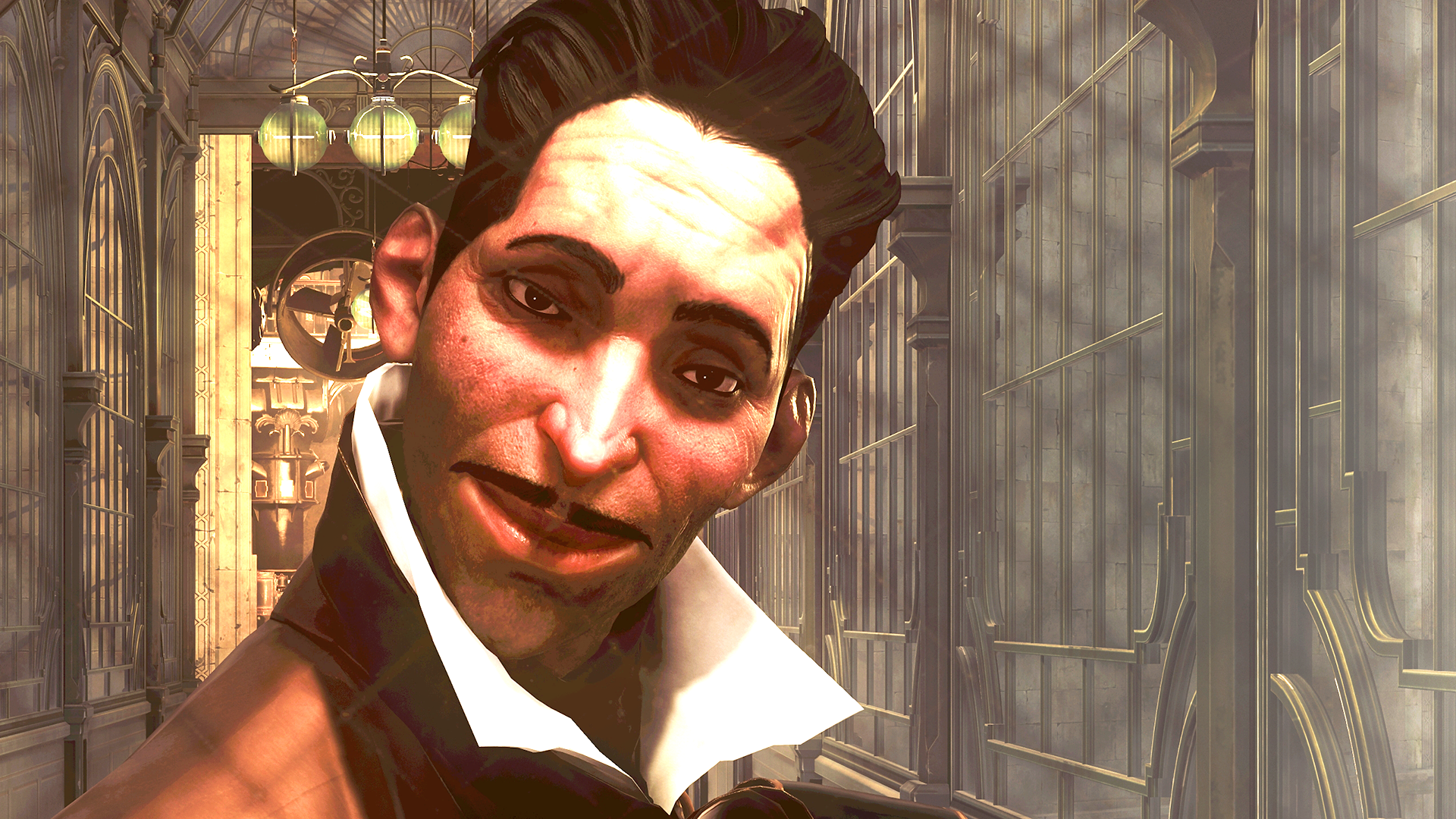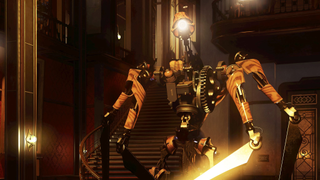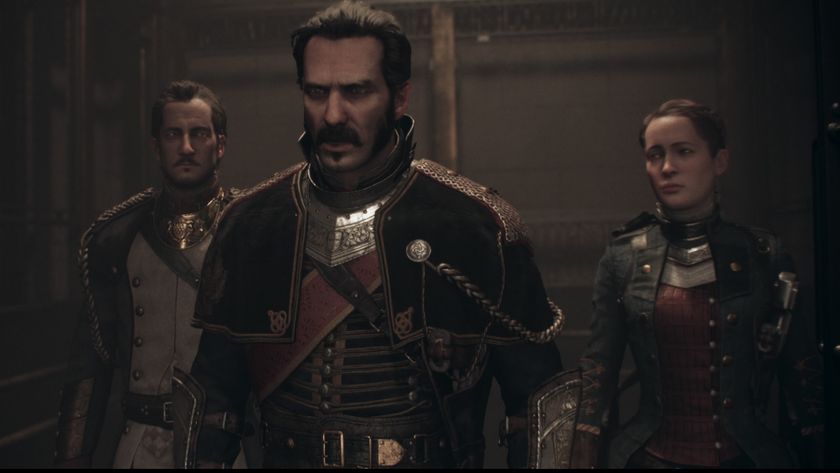The genius of Dishonored 2’s Clockwork Mansion

Perched high in the mountains above Karnaca is the Clockwork Mansion, the palatial home of the Duke’s Grand Inventor, Kirin Jindosh. He sounds like a fine, upstanding gentleman, but he’s actually an evil genius conducting sinister experiments and quietly building an army of mechanical soldiers to do his bidding. He’s your target in Dishonored 2’s fourth mission, and his mansion is the best example of developer Arkane’s rich, intricate level design. It also recalls the best bits of BioShock, using environmental storytelling as a means of diving inside the inventor’s damaged psyche.
Artistically, few developers can match Arkane. Inspired by cities in the Caribbean and Mediterranean, Karnaca is a wonderfully exotic setting with some of the most insanely detailed world-building I’ve ever seen in a game. Everything from the architecture to the clothes people wear has been carefully designed to give a sense that this is a place with a rich history and a distinctive culture. And the Clockwork Mansion is one of the best expressions of this. It doesn’t feel like a level; it feels like a place. An old, majestic, storied building, repurposed to inflate Jindosh’s enormous ego.

When you step inside, an audiograph recorded by the man himself welcomes you to his home. The unlocked door is a clue that he’s actively encouraging would-be thieves to come inside, because it’s the perfect excuse to field test his intimidating Clockwork Soldiers. True to Arkane’s freeform approach to level design, it’s possible to remain hidden and never reveal yourself to Jindosh. He’ll know you’re there—using pressure pads in the floor to track your position—but he won’t know who you are. Or, alternatively, you can introduce yourself for some extra dialogue in a face-to-face chat—albeit through the window of a locked door. Another of the level’s many BioShock nods.
Whatever your course of action, it won’t be long until you go up against a Clockwork Soldier. After several missions of fighting human enemies, facing these things forces you to shake up your play style and experiment with powers and gadgets you may have otherwise been ignoring. Some accuse Dishonored’s perceptive enemies of having eyes on the back of their head, but in the case of the Clockwork Soldiers that’s completely accurate. They can see behind them, which makes sneaking difficult. In terms of design they’re beautiful things; slender, elegant mechanical bodies plated with polished wood, bladed arms glinting menacingly when the light catches them.

But for every strength they have a weakness, and destroying one doesn’t count as a kill, meaning it’s a chance for players chasing the Clean Hands achievement to finally unleash their sword and pistol. You can shoot their head off, blinding them so they attack anything that makes a sound—including their allies. Or you can creep up from the side, their blind spot, and use a rewire tool to make them fight for you. And those are just two examples. There are many other ways to deal with Clockwork Soldiers, which are helpfully detailed in documents found scattered around the mansion.
One of the level’s neatest tricks is how its layout changes. There are levers in some rooms, and when you pull them the room folds away and changes shape before your eyes. An incredible amount of work must have gone into designing these transformations. The intricacy is astonishing. But as well as cool visual trick, these mutating rooms factor into the level design too. One environmental puzzle involves blinking through a gap in the mechanism while it’s in the process of changing to access a secret area.

Jindosh is a constant presence in the mansion, using sensors to track you and commenting on almost everything you do. Cameras don’t exist in Dishonored’s world, of course, so this is a slightly contrived way for him to keep tabs on you. If you ‘kill’ a Clockwork Soldier he’ll be simultaneously intrigued by how you did it and annoyed that you destroyed something so expensive. His scientist brain is always churning, and he sees you as a guinea pig more than anything else. But as you continue to thwart his security systems and outsmart his soldiers, he becomes increasingly frustrated by your presence.
Sign up to the 12DOVE Newsletter
Weekly digests, tales from the communities you love, and more
Again, because Dishonored 2 is a game about freedom and creative solutions, how you finally confront the mad inventor is up to you. It’s possible to sneak up on him without him ever knowing you were there, earning an achievement for your troubles. Or you can face him head-on in a sword battle, but he will call in a couple of Clockwork Soldiers to aid him. And if you’re feeling merciful, but still want to teach him a lesson, you can knock him unconscious and plug him into a machine he invented that strips people of their memories and personality. Deliciously ironic non-lethal solutions are something Dishonored excels at, and this is one of the best in the game. Deep down Jindosh knows he’s still a genius, but his mangled brain is incapable of expressing it.

Dishonored levels are really elaborate puzzles, and using your imagination to find the solution is what makes the game so compelling. The Clockwork Mansion is one of the smallest, but it makes up for it with numerous hidden and alternate paths, countless ways to complete your objectives, and that brilliant layout-shifting mechanic. And the way Jindosh’s presence is felt wherever you go, whether it’s his voice taunting you through a speaker, the weird technology stamped with his name, or reading pages from his diary, you feel like you’re building a psychological profile of him as you get closer to his lab, which gives the final confrontation extra significance.
The Clockwork Mansion is an incredible achievement, from the art and architecture of the building itself to the way its design encourages lateral thinking and creativity. It also ties brilliantly into the series’ running theme of how power corrupts people. The mansion is a monument to Jindosh’s genius, but also his megalomania. A symbol of his inflated sense of self-worth and belief that he’s the most intelligent person in Karnaca. And as a level it’s every bit as twisted and brilliant as its creator.
Most Popular








